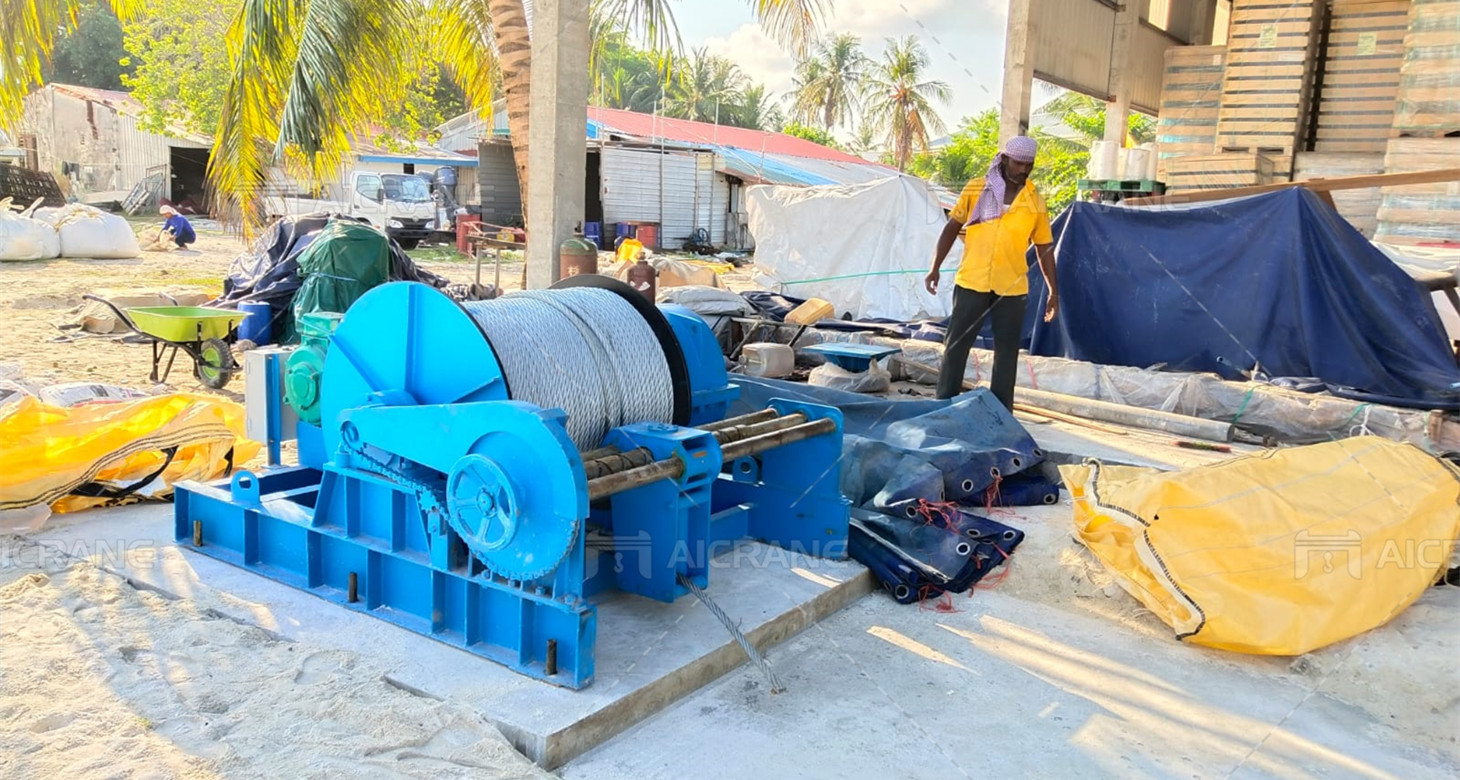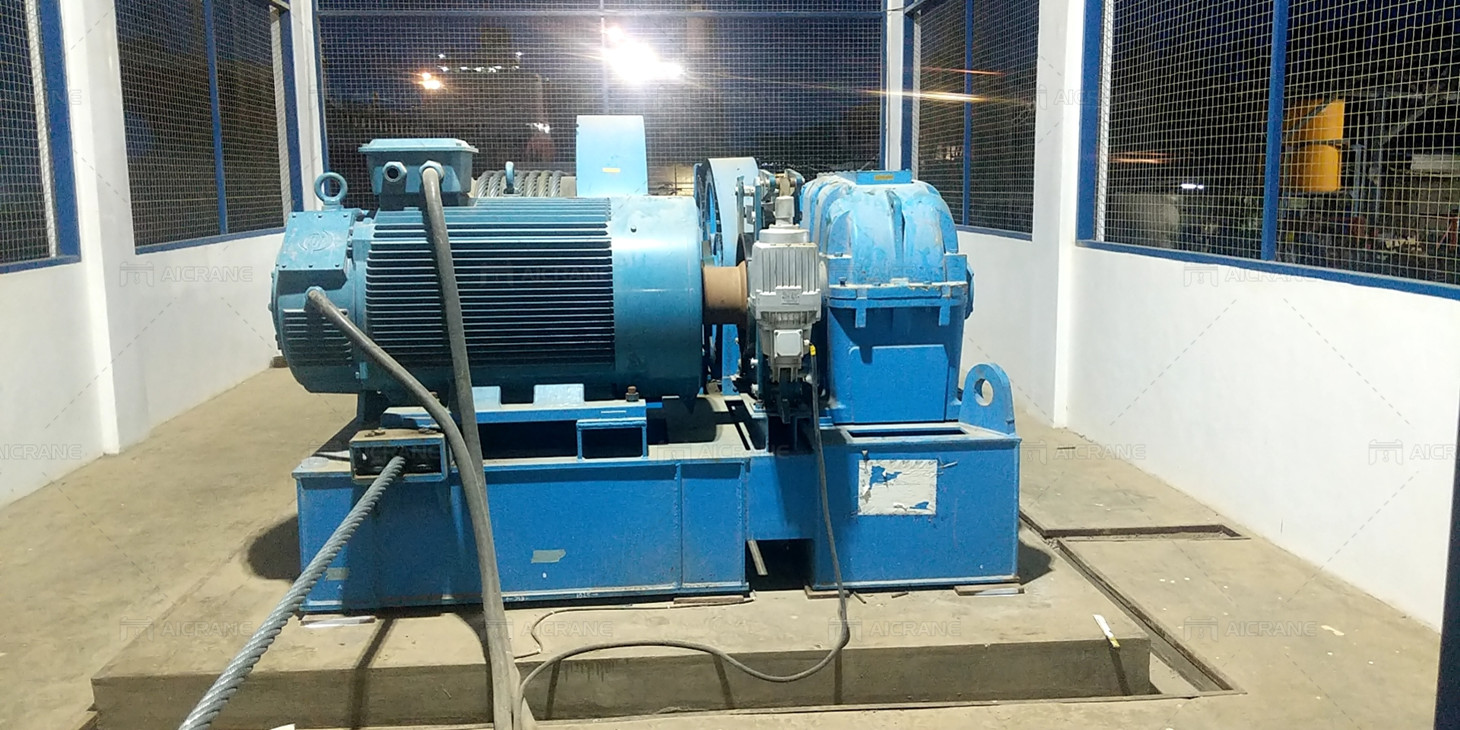Operating a slipway winch effectively requires a combination of technical knowledge, safety awareness, and operational skills. Slipway winches are commonly used in marine and shipyard facilities for hauling boats, vessels, and other watercraft onto dry land for maintenance, repairs, or storage. Proper operation of a slipway winch ensures smooth and safe boat handling while minimizing risks and maximizing efficiency. Here are the key steps and considerations for operating a slipway winch:

Pre-operation Inspection
Before starting any winch operations, conduct a thorough pre-operation inspection of the slipway winch and its components. Inspect the winch drum, wire rope, motor, gearbox, controls, safety devices, and structural integrity for any signs of damage, wear, or malfunction. Ensure that all safety features, such as limit switches, emergency stop buttons, and overload protection, are functioning properly.
Familiarize with Controls and Functions
Familiarize yourself with the controls, functions, and operating procedures of the slipway winch. Understand the operation of control panels, levers, switches, and remote control devices for winch activation, speed adjustment, direction control, and emergency shutdown. Verify the correct operation of brake systems, clutch mechanisms, and safety interlocks.
Secure Boat and Rigging
Ensure that the boat or vessel to be hauled onto the slipway is properly secured and rigged for lifting. Use suitable lifting attachments, slings, straps, or hooks to attach the boat’s lifting points to the winch’s lifting equipment, such as the hook or lifting beam. Verify that the rigging is properly tensioned, aligned, and balanced for safe and stable lifting.
Positioning and Alignment
Position the slipway winch and its associated equipment, such as guide rollers or rails, in alignment with the boat’s intended path onto the slipway. Ensure that the winch drum is positioned at the appropriate height and angle for smooth and controlled boat hauling. Verify that the slipway surface is clear of obstacles, debris, or slippery substances that could affect traction or stability.
Coordinate with Crew and Spotters
Coordinate winch operations with other crew members, spotters, or ground personnel to ensure safe and efficient boat handling. Communicate effectively using standardized hand signals, radio communications, or intercom systems to relay instructions, warnings, and status updates during winch movements and boat positioning.
Start Winch Operations
Start the slipway winch operations by activating the controls or remote devices according to the specified procedures. Gradually apply tension to the wire rope or lifting equipment to initiate boat movement onto the slipway. Monitor winch speed, load capacity, and tension levels to ensure smooth and controlled boat hauling without exceeding safety limits.

Maintain Proper Tension and Speed
Maintain proper tension and speed control throughout the winch operation to prevent sudden jerks, slippage, or overloading. Adjust winch speed and tension as needed to accommodate changes in boat position, weight distribution, or slipway conditions. Use gradual acceleration and deceleration to minimize stress on the winch system and rigging.
Monitor Safety and Environmental Factors
Continuously monitor safety factors and environmental conditions during winch operations. Watch for potential hazards such as sudden wind gusts, wave surges, or uneven slipway surfaces that could affect boat stability or winch performance. Maintain a safe distance from moving parts, keep bystanders clear of the winch area, and follow established safety protocols.
Perform Post-operation Checks
After completing winch operations, perform post-operation checks and inspections of the slipway winch and associated equipment. Inspect the wire rope, drum, motor, controls, and safety devices for any signs of wear, overheating, or damage. Lubricate moving parts, adjust tension settings, and clean the winch system as needed for optimal performance and longevity.
Record Keeping and Maintenance
Maintain detailed records of winch operations, including load capacities, operating times, maintenance activities, and safety incidents. Follow recommendations and schedules of manufacturer for routine maintenance, lubrication, and inspections of the slipway winch. Address any maintenance issues promptly, and report any safety concerns or equipment malfunctions to supervisors or maintenance personnel.
In conclusion, operating a slipway winch requires careful planning, coordination, and adherence to safety protocols. By following proper procedures, conducting thorough inspections, communicating effectively, and maintaining equipment integrity, winch operators can ensure safe and efficient boat handling operations on slipways. Regular training, certification, and ongoing safety awareness are essential for winch operators to perform their duties effectively and contribute to a safe working environment.